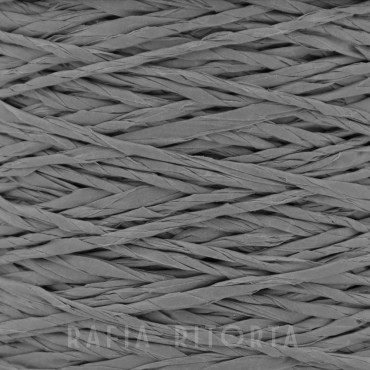Twisted raffia for making bags, favors and other crochet items. Approximate weight of 250 grams for 250 meters recommended Crochet 3-4. 100% certified OekoTex® vegetable celluloseNote: Due to the natural material (vegetable cellulose) a weight variation of 5-6% due to moisture absorption or loss should be considered. [P.ta SB30351]
0 prodotti 0
Your cart is empty
Filter By
Colore
Colore
raffia
Natural Raffia: An Eco Material for 1000 Creative Uses
Have you ever seen those beautiful crochet summer bags, perhaps from some prestigious brand parading on the catwalks in Milan? These creations are often made with Natural Raffia, a tenacious and versatile product that lends itself to countless creative and sustainable uses.
Characteristics of Raffia
What are the characteristics of raffia?
Raffia is appreciated for its strength, flexibility, and durability. Harvested from palms in tropical Africa, it stands out for its eco-friendly quality, being a completely biodegradable material.
Extraction of Raffia
How is raffia obtained?
Raffia is obtained from the leaves of palms of the genus Raphia. The fibers are extracted, cleaned, and then left to dry naturally, thus maintaining their natural robustness.
Natural Raffia vs. Synthetic
What are the differences between natural raffia and synthetic raffia?
Natural raffia is biodegradable and comes from renewable sources, unlike synthetic raffia, which is derived from petrochemical products like polyethylene and polypropylene and is not biodegradable.
Use of Raffia in Different Sectors
In which sectors is raffia used?
In addition to the fashion industry, raffia is used in the rope industry, basketry, mat making, hydraulics, and gardening.
Knitting or Crocheting with Raffia
How do you knit or crochet with raffia?
Raffia can be easily worked with knitting or crochet techniques, with tutorials and step-by-step guides available on blogs and specialized sites like Tessiland.
Raffia in Hydraulics and Gardening
What are the uses of raffia in hydraulics and gardening?
In the hydraulic sector, raffia is used as insulation and reinforcement, while in gardening it is used to tie plants and as a component in protective mats.
Purchasing Raffia Products
Where can I purchase raffia products?
Raffia products are available on online platforms such as Tessiland, but if you are looking for a finished product, you can inquire directly with the tens of thousands of Tessiland followers on social channels like the exclusive Tessiland Group.
Alternatives to Raffia
Are there alternatives to raffia?
Yes, among the alternatives are synthetic materials like polyethylene and polypropylene, but also natural fibers like jute, all with different properties and environmental impacts.
Environmental Impact of Raffia
What is the environmental impact of the production and use of raffia?
Natural raffia generally has a low environmental impact, thanks to its biodegradability. The sustainability of the production and use of synthetic raffia, however, is a more complex issue due to its non-biodegradability and the non-renewable sources from which it comes.
Exploring the vast range of uses for raffia, Tessiland is committed to offering products that not only inspire creativity but also promote environmental awareness.


